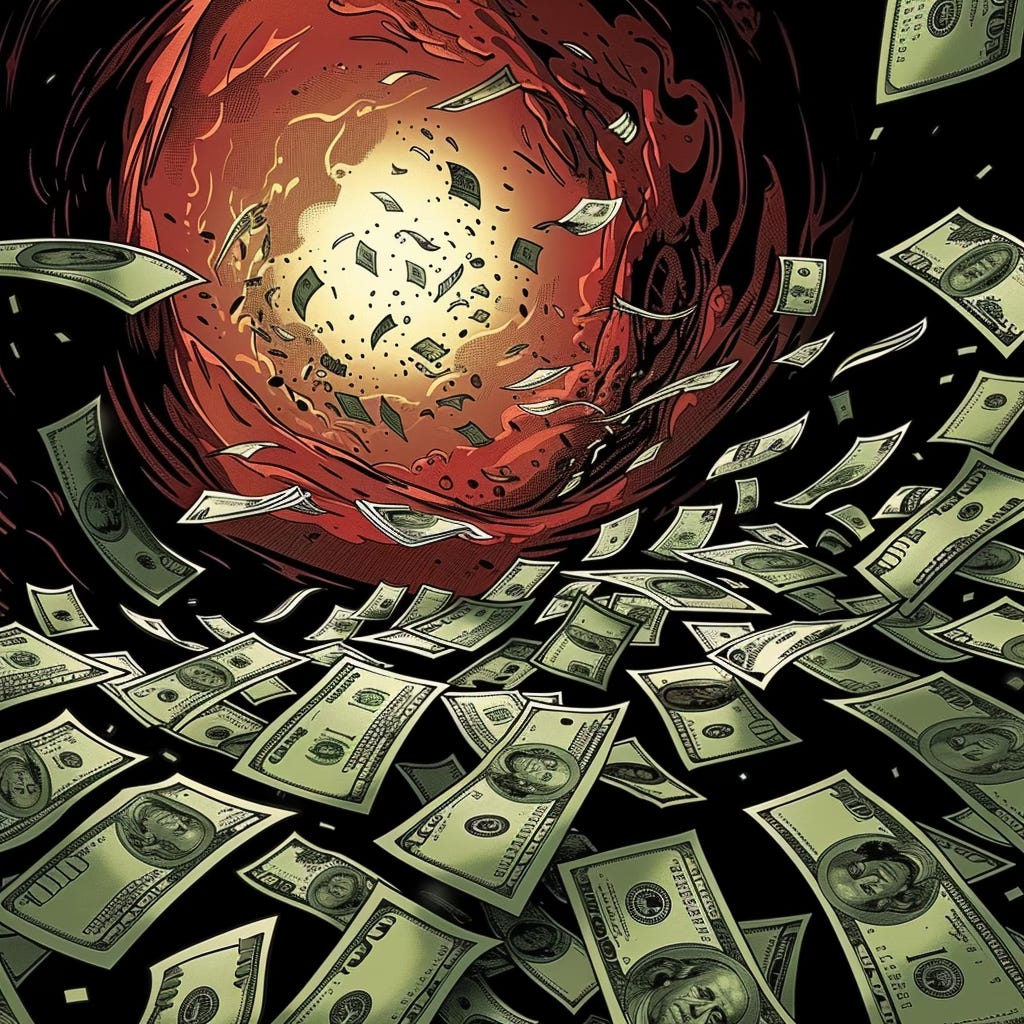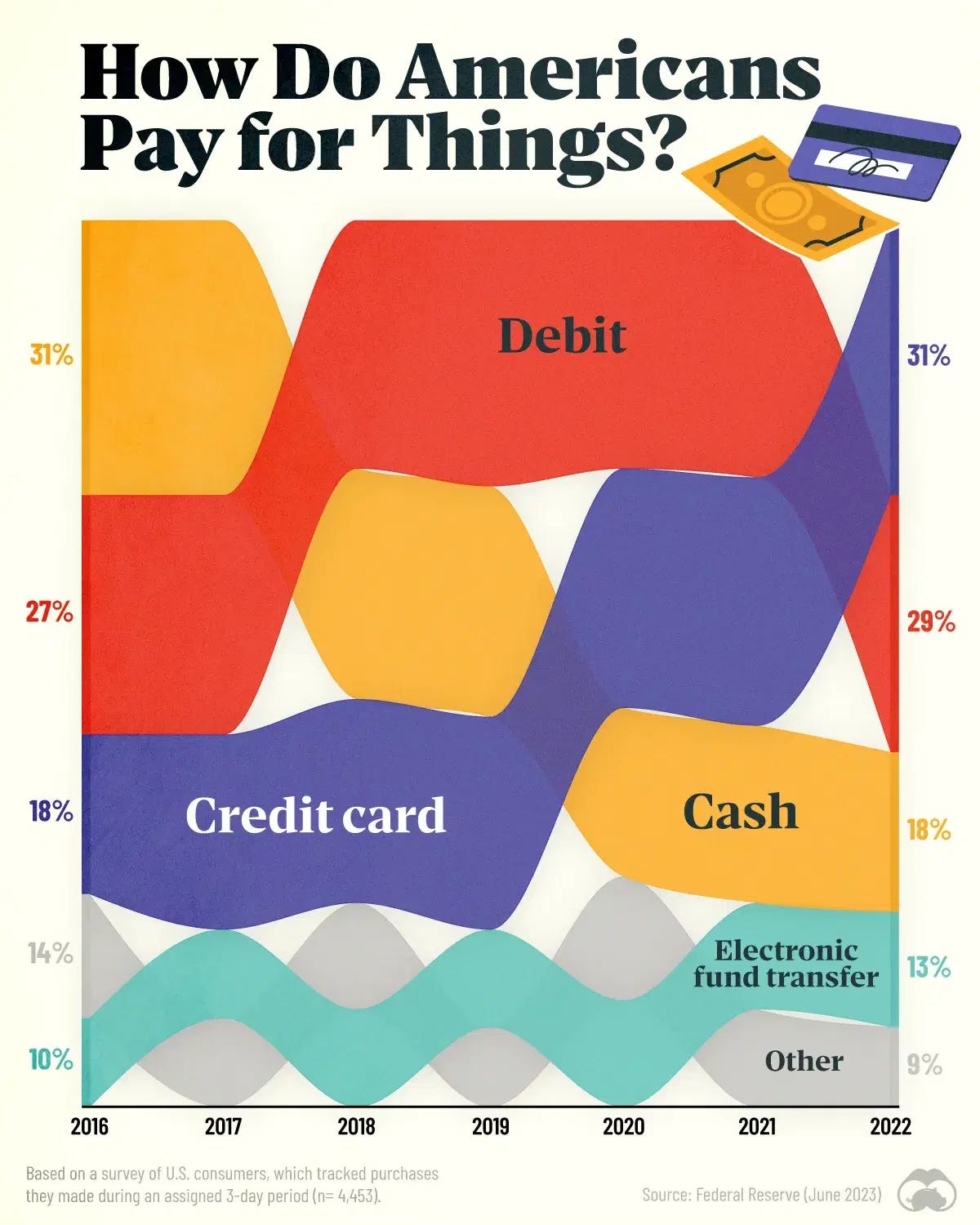Five charts to start your day
Is this the end of physical currency?
On my last trip to the US, I hardly saw a dollar note. Pretty much every transaction I made was cashless, from cab rides and buying a coffee to even purchasing a stick of gum. Americans have ditched cash.
Twenty years ago, it was a different story. I had to carry a money clip around to handle all those dollar notes. It was a bit of a pain because all the notes were the same colour. You always ran the risk of accidentally giving a cab driver a twenty instead of a five.
Recent data from the Federal Reserve's Diary of Consumer Payment Choice shows that cash usage in the US has been on a steady decline, with a particularly sharp drop in its use during the pandemic.
Here’s a nice data visualisation from my good friends at Visual Capitalist that shows this trend. What you can see is that in 2016, cash accounted for a respectable 31 per cent of all payments. However, by 2022 this figure had plummeted to a mere 18 per cent. What has increased, however, is credit card usage, which has risen from 18 per cent in 2018 to a staggering 31 per cent in 2022.
Source: Visual Capitalist
The bottom line
What we have seen is a fairly rapid transition from cash to digital payments, which is not necessarily great for those who value their privacy.
Generally speaking, governments and tax authorities like the IRS hate cash. Cash has no memory of who held it or who holds it, making it difficult to tax. Digital payments, however, leave a trail to follow every time a transaction takes place.
Every time you make a payment on your credit or debit card, the transaction is recorded. The downside here is that nothing you do is anonymous, as you generate a huge trail of data as you spend. This can be used to tax you more, as mentioned, or it can be used by companies to target you in marketing campaigns.
The other drawback is that it becomes a lot easier to transact, which means that you spend more. This might be good for economic growth, but it can also be inflationary and bad for your personal finances.
Coming up:
Visualising the rapid rise of NVIDIA
A new milestone in the inversion of the yield curve
There’s a huge gap in the UK between services and goods inflation
A housing crunch could be America's next economic threat
If you like the sound of that line up, this is usually a paid newsletter. You basically get all my best ideas daily. Hit the subscribe button if you are interested and this will be sent to your inbox daily.




